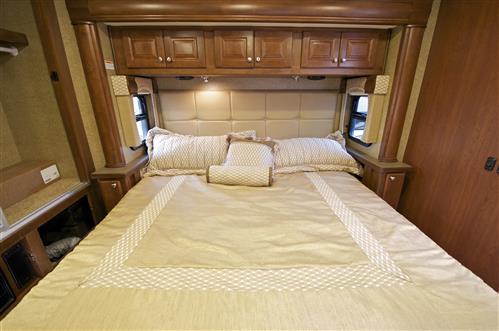Recent Posts
Allergies: Membrane vs. Non-Membrane Protective Mattress Covers
Posted on
If you suffer from seasonal or chronic allergies, you know how difficult it can be to get a decent night’s rest. In the bedroom, there are all sorts of allergy triggers, besides dust and pollen. One of the biggest causes is that of dust mites in our mattresses. Dust mites feed on dead skin cells and humans shed millions of them each day, especially while we are asleep.
The dead skin cells and dust mites can get down into the mattress where they will continue to live and cause allergic reactions in people. One way to reduce the amount of potential allergy triggers in the bedroom is to use protective mattress covers and pillow covers. Both of these products create a barrier between you, your mattress, and your pillow. As a result, any dust, pollen, dead skin cells, and dust mites already in your mattress and pillow are trapped inside, and it reduces the potential for allergy attacks while you are sleeping.

Membrane and non-membrane are two different types of non-allergenic mattress and pillow encasements you will find on the market. It is important to know the differences between the two so you can select the most appropriate product to suit your needs.
Membrane Encasements
Membrane protectors are either made entirely of have a waterproof backing and soft cloth top. They are designed to prevent liquids and moisture from absorbing into the mattress and pillows, while at the same time blocking dust mites and other allergens and preventing them from also getting into the mattress and pillows.
If you sweat frequently while you sleep, then an encasement with awaterproof back and soft cloth top is recommended. The cloth top can make you feel cooler while you sleep, and the waterproof backing will prevent sweat from being absorbed into the mattress and your pillows.
Non-Membrane Encasements
Non-membrane encasements are made from tightly spun fabrics with very small pore sizes to block allergens and dust mites from getting into, or out of, the mattress and pillows. There is not a waterproof backing on non-membrane encasements. As a result, moisture can be absorbed into the mattress and pillows. If you choose a non-membrane protector, make sure the pore size has a rating of 6 microns or less in order to have sufficient allergen-blocking protection.
Additionally, if you are a hot sleeper and tend to toss the covers off, a non-membrane protector made from breathable materials can help you sleep cooler. Breathable materials help to keep your sleeping area from getting too warm or uncomfortable.
Now that you know the difference between the two types of mattress and pillow protectors, you need to consider your needs in order to make the best decision. If you have children or there is a risk for accidental spills, bedwetting problems, incontinence, and night sweats, then a membrane encasement with a soft cloth top would be a wise choice. Choosing a waterproof encasement is usually the best choice because it encompasses all of the best qualities a mattress should have to last a long time and to provide you with the highest quality in comfort.
For further assistance in selecting the best non-allergenic bedding and encasements for your home, camper, and RV, contact RV Mattress Protectors by Mattress Safe at 770-205-5335 to speak to one of our friendly and knowledgeable representatives.


 Follow Us on Twitter
Follow Us on Twitter